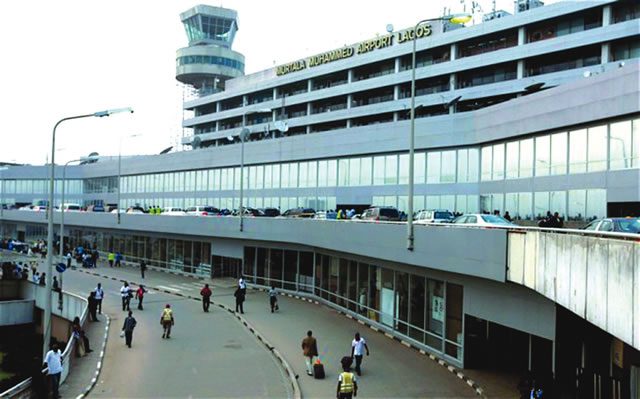Forgotten Dairies
Radioactive Waste Disposal: Hinderance to Nigeria’s Civil Nuclear Programme? -By Yusuf O. Ali


Yusuf O. Ali
The turn of the millennium was heralded as the beginning of a new dawn for nuclear power; the much acclaimed Nuclear Renaissance! This wave of enthusiasm was prompted by the ever-increasing demand for electricity around the world and the universal appreciation of the need to reduce CO2 emissions as part of the larger climate change mitigation campaign. Fifteen years on, it would appear that the “plane” expected to take this renaissance “off the ground” is stuck in reverse gear with nuclear power seemingly losing its appeal to even its previously loyal customers.
No prizes for stating that the tragic 2011 Fukushima incident in Japan has been a major contributor to the stagnation of the nuclear renaissance. A less popular but arguably equally important issue that has stopped the nuclear renaissance in its tracks is the persistent uncertainty surrounding Radioactive Waste Management and Disposal.
Without getting too technical, nuclear power utilises and produces materials that are radioactive. A radioactive material is one that contains radioactivity, which gradually decays away depending on the half-life of the element(s) it contains. The half-life being the time it takes for half of the element to decay away.
While the human body can withstand coming in close contact with some radioactive materials, for safety reasons, most of the radioactive materials from nuclear power plants must be kept far away from human reach until the radioactivity they contain has decayed away. A layman would be forgiven for saying “okay then, just dump the radioactive waste in a room and lock it up until all the radioactivity is gone!”
Sadly, it is far from being as straightforward as that. The combination of the safety distance required (could be several hundred metres behind heavy steel shielding) and the fact that this decay process could take hundreds of millions of years make this seemingly innocuous issue a lot trickier. This is why the radioactive waste management sector is in quite a limbo, as many countries are struggling to develop and implement publicly accepted methods for managing their most radioactive wastes.
Although different countries have subtle variations, generally speaking, radioactive wastes can be grouped into three classes namely; Low Level (LLW), Intermediate Level (ILW) and High Level Wastes (HLW). Unsurprisingly, the naming sequence is based on the radioactivity and consequent hazards that these wastes carry with LLW and HLW carrying the least and most threat respectively. Rather more surprising is the fact that in the UK, for example, LLW account for over 95 percent of the volumetric quantity of the wastes but for less than 0.5 percent of the total radioactivity, while HLW account for less than 0.05 percent of the volume and contain over 95 percent of the radioactivity.
Although radioactive wastes are generated during the routine operation of nuclear plants, the volumetric majority of wastes come during the decommissioning of these plants. Over the years, virtually all the countries involved with nuclear power have successfully developed and implemented treatment and disposal processes for their LLWs. However, with the exception of Finland, no country has been able to achieve the same for the their higher level wastes (ILW and HLW). The fact that Finland expects to open its Onkalo HLW disposal facility by 2020 (work is at a very advanced level) shows that the technology clearly exists and begets the question “what could the problem possibly be?”
As ironic as it may sound, the problem has been US. Yes, we human beings. More accurately, the problem has been our insistence on not trusting that the technology (which has been applied successfully) is safe enough to protect our families (hundreds of generations down the line) from the seemingly timeless hazardous radioactive wastes. The wisdom of such a belief is a topic best left for the psychologists. What is more pressing for Nigeria (and perhaps other countries aspiring to have civil nuclear programmes) is the understanding of the impact of the ILW/HLW management limbo on public acceptance of the technology in their respective countries.
This issue can be viewed in separate domains; the first domain is with respect to countries that already have civil nuclear projects. It involves understanding the impacts of the limbo on them as they attempt to expand their civil nuclear programmes. The second domain is the impacts of the limbo on countries like Nigeria who are just attempting to start their civil nuclear programmes.
Between 2012 and 2014, delays in the approval of the Yukka Mountain HLW disposal repository meant the US Nuclear Regulatory Commission was forced to suspend all licensing decisions on applications for the construction and operation of new nuclear power plants. Although this ban has been subsequently lifted, polls show that public opposition against new nuclear power in the USA is highly linked with the chaos surrounding the management and disposal of the concomitant radioactive wastes.
Similarly, a legal challenge by local residents concerned about the dangers posed by radioactive wastes led to the revocation of the licenses granted for the construction and operation of a nuclear power plant in Ontario, Canada. Although the UK is committed to adding at least one nuclear power plant by 2023, a government poll showed that over 16 percent of respondents were against nuclear power solely because of the indecision surrounding HLW disposal.
In the case of countries attempting to start civil nuclear projects, unsurprisingly, research into the countries at the most advanced stages suggest that the uncertainty surrounding the management of HLW is not a big enough concern to dissuade the public against civil nuclear power. In some of these countries, residents believe that the HLW management problem is not beyond what current technology can handle safely. One of such countries is Lithuania where a government survey showed that over 56 percent of Lithuanians were convinced that disposal (transportation and storage) of all radioactive wastes could be done safely.
The above findings seem to suggest that the uncertainty around HLW management has chiefly only hindered the development of new nuclear power plants in countries that already have civil nuclear projects and hence the planned commencement of civil nuclear power in Nigeria in 2025 should not be threatened by the HLW management issue.
In spite of this, taking this issue for granted rather than addressing it now could be a dangerous path for aspiring civil nuclear countries to tread. Looking at the issue of HLW disposal in the UK (an area in which I have done significant work); I can unequivocally say that ignorance about the whole issue of radioactivity is the cause of the overwhelming opposition to geological HLW disposal by the British public.
Surveys have shown that people immediately around the Sellafield area, where the Geological Disposal Facility (where the waste is to be buried) is located voted tremendously in support of having it there. This is particularly important when one considers that these people are more educated than most about radioactive wastes, its management, disposal and associated risks because the Sellafield area is where all the spent nuclear fuel reprocessing in the UK has been undertaken since the mid-1950s.
Therefore, the lesson for Nigeria is that extensive enlightenment will be necessary if the government is to ensure that the uncertainty currently affecting HLW management does not throw a spanner in the wheels of the plan to start nuclear power generation in Nigeria by 2025.
As we all know, “knowledge is power.” The government must therefore begin its enlightenment campaigns in earnest before the “wind of ignorance” which is often difficult to arrest takes over and pours cold water over Nigeria’s civil nuclear ambitions before its fires are even stoked.
Yusuf O. Ali, a doctoral candidate in the Department of Engineering, University of Cambridge, also with an MPhil in Nuclear Energy from Cambridge, can be reached through: yoa20@cam.ac.uk, and Twitter: @YalyAliYusuf


















